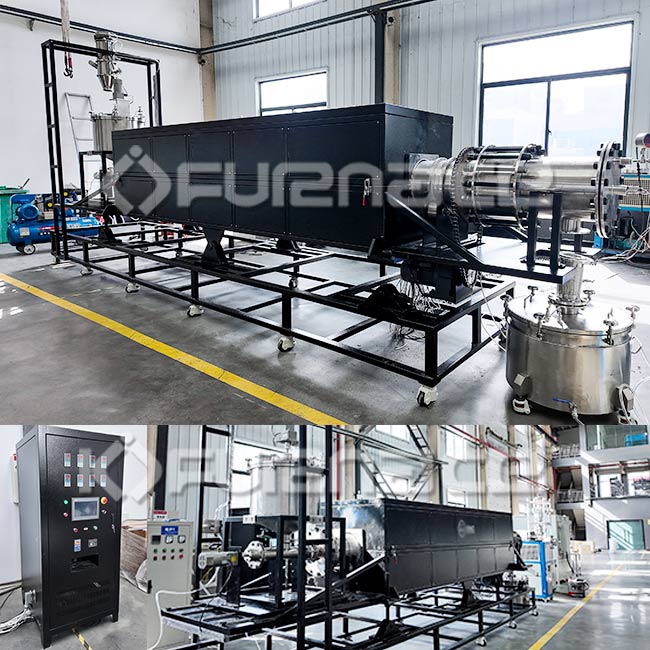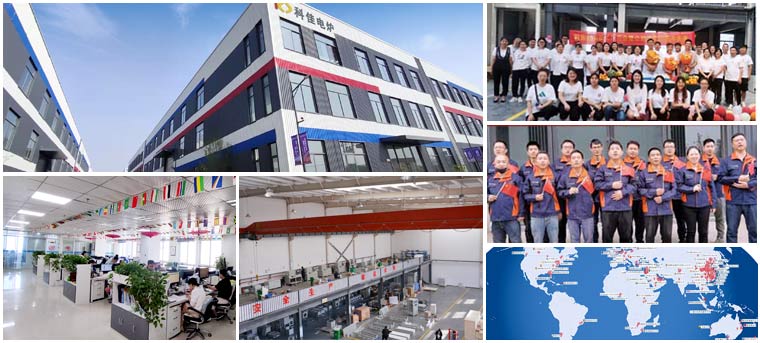Precautions for the operation of the rotary tube furnace
As a high-temperature experimental equipment, the rotary tube furnace is widely used in the fields of material synthesis, heat treatment, ceramic sintering, etc. In order to ensure the normal operation of the equipment and the safety of the operators, the following operating precautions must be strictly observed:
1. Preparation before operation
Wear protective equipment: Operators must wear personal protective equipment such as high-temperature gloves, protective glasses, masks, etc. before using the rotary tube furnace to prevent high-temperature burns or inhalation of harmful gases.
Check the equipment status: Confirm that the furnace body, furnace tube, heating element and temperature control system are intact, check whether the power cord and connector are firm, and avoid electric sparks or short circuits.
Clean the furnace tube: Before loading the sample, make sure that the inside of the furnace tube is clean and free of impurities to avoid contaminating the sample or affecting the experimental results.
2. Operation process specifications
It is strictly forbidden to allow flammable and explosive substances to enter the furnace: It is forbidden to introduce flammable liquids, volatile substances or corrosive gases into the furnace tube to prevent explosions or damage to the equipment.
Control the heating rate: Especially in the low temperature stage (below 300℃), the heating rate should not be too fast to avoid the furnace tube or sample rupture due to thermal stress.
Avoid direct contact with the furnace body at high temperature: During the heating process, it is strictly forbidden to touch the furnace body and heating elements with hands or tools to prevent burns.
Ventilation operation specifications: If protective gas (such as nitrogen, argon) needs to be introduced, the exhaust valve must be opened to avoid excessive pressure in the furnace tube causing danger.

Real-time monitoring of temperature changes: Closely observe the temperature changes in the furnace through the temperature control system to ensure that it operates stably within the set range.
Pay attention to the furnace cooling system: For rotary tube furnaces with cooling systems, check whether the cooling water or air cooling device is working properly to prevent overheating and malfunctions.
4. Post-operation processing
Wait for cooling before operating: After heating is completed, you must wait for the furnace body to cool naturally to a safe temperature before sampling or cleaning operations.
Turn off the power supply and gas source: After confirming that the temperature in the furnace has dropped to a safe range, turn off the power supply and gas valve to prevent accidental startup or gas leakage.
Regular maintenance: Regularly check the furnace tubes, heating elements and control systems, clean the residues in the furnace, and ensure long-term stable operation of the equipment.
5. Emergency treatment measures
Equipped with fire extinguishing equipment and first aid equipment: Fire extinguishers, first aid kits and other emergency equipment should be available in the laboratory to quickly respond to emergencies such as fire and electric shock.
Familiar with the emergency treatment process: Operators should receive professional training and be familiar with the emergency treatment methods for common faults such as power outages, gas leaks, and furnace tube ruptures.
By following the above operating precautions, the safety and stability of the rotary tube furnace during the experiment can be effectively guaranteed, the service life of the equipment can be extended, and the success rate of the experiment can be improved.


 E-mail:web@kejiafurnace.com
E-mail:web@kejiafurnace.com
 Tell:+(86) 18037178440
Tell:+(86) 18037178440
 Whatapp:+(86) 180-3717-8440
Whatapp:+(86) 180-3717-8440
 Address:Room 1505, Building 9, No. 26 Dongqing Street, Zhengzhou High-tech Industrial Development Zone
Address:Room 1505, Building 9, No. 26 Dongqing Street, Zhengzhou High-tech Industrial Development Zone
